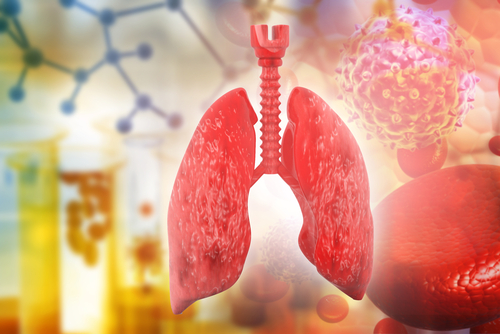Certain Matrix Metalloproteinases Are Potential Biomarkers for PF in Rare Genetic Disorder, Study Suggests

Increased activity of certain matrix metalloproteinases (MMPs), enzymes that regulate cell behavior, may explain the risk for developing aggressive pulmonary fibrosis in people with Hermansky-Pudlak syndrome (HPS), a rare genetic disorder, according to new research. The study highlights MMP-2 and MMP-9.
The findings suggest that these unique MMPs are potential biomarkers for lung disease in HPS patients.
The study, “Matrix metalloproteinase activity in the lung is increased in Hermansky-Pudlak syndrome,” was published in the Orphanet Journal of Rare Diseases.
People with HSP, a rare disorder characterized by alterations in the coloring, or pigmentation of the skin, hair, and eyes, can develop an aggressive form of PF. The disease is caused by genetic mutations, and is classified into nine different types, depending on the mutation and its symptoms.
MMPs are enzymes capable of degrading matrix proteins and remodeling the extracellular matrix (ECM) — the mesh-like scaffold surrounding cells. MMPs have been suggested to be involved in idiopathic pulmonary fibrosis (IPF). However, whether MMPs play a role in the lung disease seen in people with HSP remains unknown.
To address this question, a team led by researchers at the Center for Translational Medicine at Thomas Jefferson University evaluated the activity of MMPs in the lungs of mice with HSP type 2, and from bronchoalveolar lavage fluid of patients with the disease.
Results showed that the levels of two MMPs — MMP-2 and MMP-9 — were markedly increased in the lungs of mice with HSP-2. These MMPs also were increased in mice with HSP subtype 1, along with MMP-3, MMP-8, MMP-12, and MMP-14.
Similar to the results in mice, protein levels for MMP-2 and MMP-9 also were increased in bronchoalveolar lavage fluid from HSP patients, compared with age-matched controls.
“Our findings indicate that MMP activity is dysregulated in the HPS lung, suggesting a role for these proteases as biological markers or pathogenic players in HPS lung disease,” the researchers said.
The increase in MMP levels occurred before the onset of lung fibrosis, the researchers said. The levels were further increased in the lungs of HSP-1 and HSP-2 mice after they received a low-dose of the chemotherapeutic agent bleomycin in the lungs. Bleomycin is used to induce PF in mice.
These results suggest that the mutations linked with HSP alter the activity of MMPs, and that these changes might contribute to lung damage and scarring, or fibrosis.
“Our work supports the notion that dysregulation of MMPs contributes to the development of pulmonary fibrosis. But importantly, it also suggests that unique patterns of MMP alterations could be exploited for the diagnosis and/or prognosis of lung disease in Hermansky-Pudlak syndrome,” Ross Summer, MD, the study’s first author, said in a press release.







